By Mike Phifer
The guns of the British warships assaulting the Cuban shoreline just east of Havana on the morning of June 7, 1762, roared to life in a flash of orange flames and grey smoke. As they furnished covering fire for the landing force, hardy sailors heaved with all of their might against the wind and current to propel their flat-bottomed longboats with infantry and marines aboard to shore on the island.
Packed into the first wave of 49 boats, each of which was manned by 18 sailors and junior officers, were two battalions of grenadiers. The grenadiers formed the center of the first wave. To their right were boats carrying a battalion of light infantry, and to their left were boats bearing three battalions of regulars. A second wave of 27 boats moved into position behind them bearing more grenadiers and a battalion of the Royal American Regiment.
The first wave of redcoats bounded out of the boats into the warm water at 10:30 a.m. They held their muskets and cartridge boxes high to avoid getting them wet as they waded ashore. The sailors rowed back to the waiting line of ships of the line and transports to ferry more troops ashore. Forming up on the sandy beach the troops on the left flank soon came under fire from Spanish troops manning several artillery pieces in a makeshift fort at the mouth of Bacuranao River.
A British frigate and sloop supporting the landing troops silenced the Spanish guns and forced the enemy troops manning the strongpoint to withdraw. The second wave of troops came ashore at midday. Once the landing force was ashore, the light troops marched west along the narrow beach toward another enemy fort on the Cojimar River. British ships took it under fire, forcing 600 Spanish troops to spike their guns and withdraw inland. Royal marines came ashore and secured the stone fort.
The main force of British troops crossed the Cojimar and advanced two miles before halting for the night. Back at the landing site, reinforcements came ashore along with guns, horses, and provisions. All things told it had been a good day. The British had secured their beachhead with relative ease. On the morrow they planned to take up siege positions around Havana. Successfully besieging Havana, the crown jewel of Spain’s New World Empire, would not be an easy task because of the deadly threat of disease in the tropical environment.
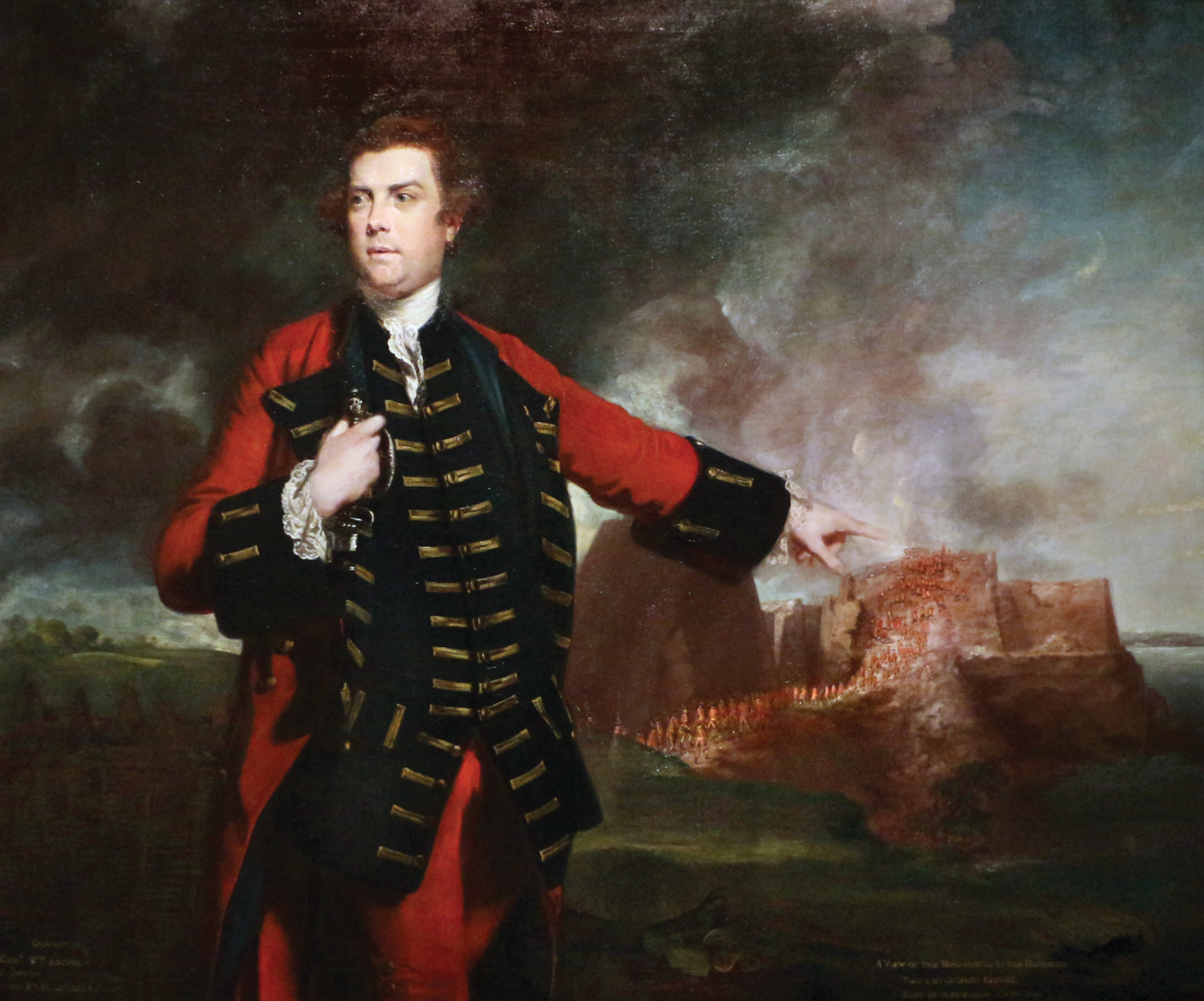
By 1762 Great Britain had been at war with a coalition led by France that included Austria and Russia for six years. In North America the war between the two rival European powers had begun as early as 1754. Six years into the global conflict known as the Seven Years War, Great Britain had shattered a good part of France’s overseas empire in North America, India, and Africa, but at a great cost in blood and treasure. Great Britain experienced an additional financial burden in continental Europe where it supported Prussia against France’s ally Austria.
As peace talks ground to a halt in 1761 between Great Britain and France, the Spanish crown threatened to enter the war on the side of France. King Louis XV of France and King Charles III of Spain had close ties given that each monarch belonged to a branch of the Bourbon dynasty. What is more, King Charles disliked the British and wanted to prevent a British victory that would alter the balance of power.
On August 15, 1761, the two monarchies entered into an alliance known as the Third Bourbon Family Compact. Under the terms of the agreement, Spain agreed to enter the war by May 1, 1762, if it was not over by then. This would allow time for the treasure fleet to arrive in Spain from the New World before Spain’s advent of hostilities with Great Britain. France in turn promised to support Spain if attacked. The compact forbade both parties from making separate peace with Great Britain.
When news of the alliance reached Great Britain’s parliament, Prime Minister William Pitt “the Elder” strongly pushed for a declaration of war against Spain. All of his fellow ministers, with the exception of one, disagreed with him for they did not believe that Great Britain had the military resources to fight a new enemy. In the fall out from the disagreement, Pitt resigned from office on October 5, 1761.
The British ambassador to Spain delivered an ultimatum to Madrid on November 19. The ultimatum stated that if Spain did not immediately renounce any intentions of acting as an ally of Britain’s enemies in the Seven Years War, then a state of war would exist between the two nations. Madrid did not respond to the ultimatum. Great Britain therefore declared war on Spain on January 4, 1762. Two weeks later Spain declared war on the British crown.
The British ministers had been correct in their assessment. Great Britain was in no position financially for a drawn-out war with the Spanish crown. Spain had to be dealt a swift decisive blow to knock it out of the war as quickly as possible. Lord George Anson, the First Lord of the Admiralty, submitted such a plan in early January 1762. Anson and General John Ligonier, the commander-and-chief of the British army, met with senior cabinet officials and proposed an attack on Havana.
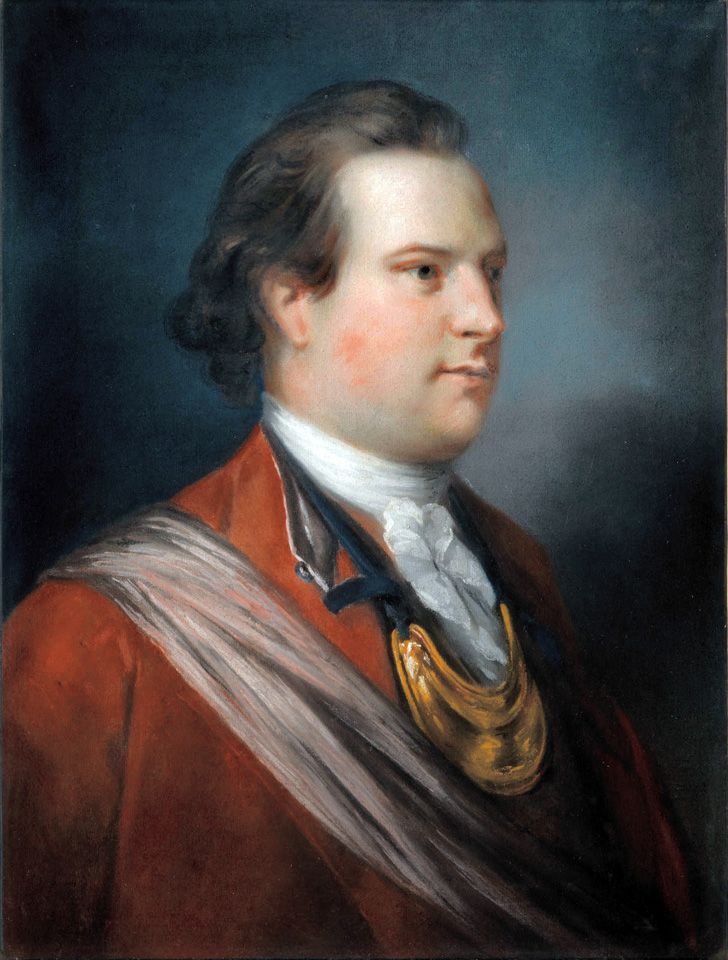
Havana was home to 70,000 people and was the third largest city in the Americas after Lima and Mexico City. The Royal Shipyard of Havana was one of the three most important shipbuilding and repair facilities possessed by the Spanish crown. In addition to serving as a strategic naval base, Havana also boasted a robust economy, exporting sugar, tobacco, and animal hides. It was where Spanish galleons laden with gold and silver from the Spanish Main rendezvoused before making the voyage across the Atlantic heading to Spain. Havana possessed an expansive natural harbor that could accommodate as many as 1,000 sailing ships. Thus, it was of paramount importance that Havana remained in Spanish hands.
The cabinet not only accepted Anson’s proposal to capture Havana, but also another plan to send a leaner expeditionary force to seize Manila, the Spanish capital of the Philippines, which was crucial to the sustainment of Spain’s Pacific empire.
The British hoped that the loss of both Manila and Havana would seriously damage Spain’s trading economy forcing it to negotiate for peace. The new Prime Minister, Thomas Pelham-Holles, the Duke of Newcastle, was reluctant to dispatch an expedition to Havana for he believed it would be an expensive and hazardous military operation. The cabinet, which dismissed his concerns, ordered senior military officials to begin preparing for the daring venture.
Vice Adm. George Pocock was selected to command the expedition’s naval forces, and General George Keppel, the Earl of Albemarle, was given command of the land forces. Albemarle’s two younger brothers also participated in the Havana expedition. Commodore Augustus Keppel was Pocock’s senior naval commander. Lt. Gen. George Elliot served as Albemarle’s senior commander of the land forces. Maj. Gen. William Keppel was given command of one of the two infantry divisions participating in the expedition.
The British plan called for Pocock and Albemarle to sail with 4,000 regulars, a Royal Artillery detachment, and a handful of engineers from England for the Caribbean. They would be reinforced not only by troops already in the Caribbean, but also American provincials.
In July 1761 Pitt had sent 11 battalions of British soldiers who were veterans of the Canadian campaign to the Caribbean. They had departed from New York under the command of Maj. Gen. Robert Monckton. The Royal Navy put British troops ashore on Martinique in mid-January. After heavy fighting between the French garrison and British forces, the French surrendered on February 12.
As was often the case in campaigning in the Caribbean, yellow fever proved deadlier than bullets. Monckton reported in May that a quarter of his troops were too sick for duty. Although given the choice to participate in the raid on Havana, he was too ill and returned to New York.
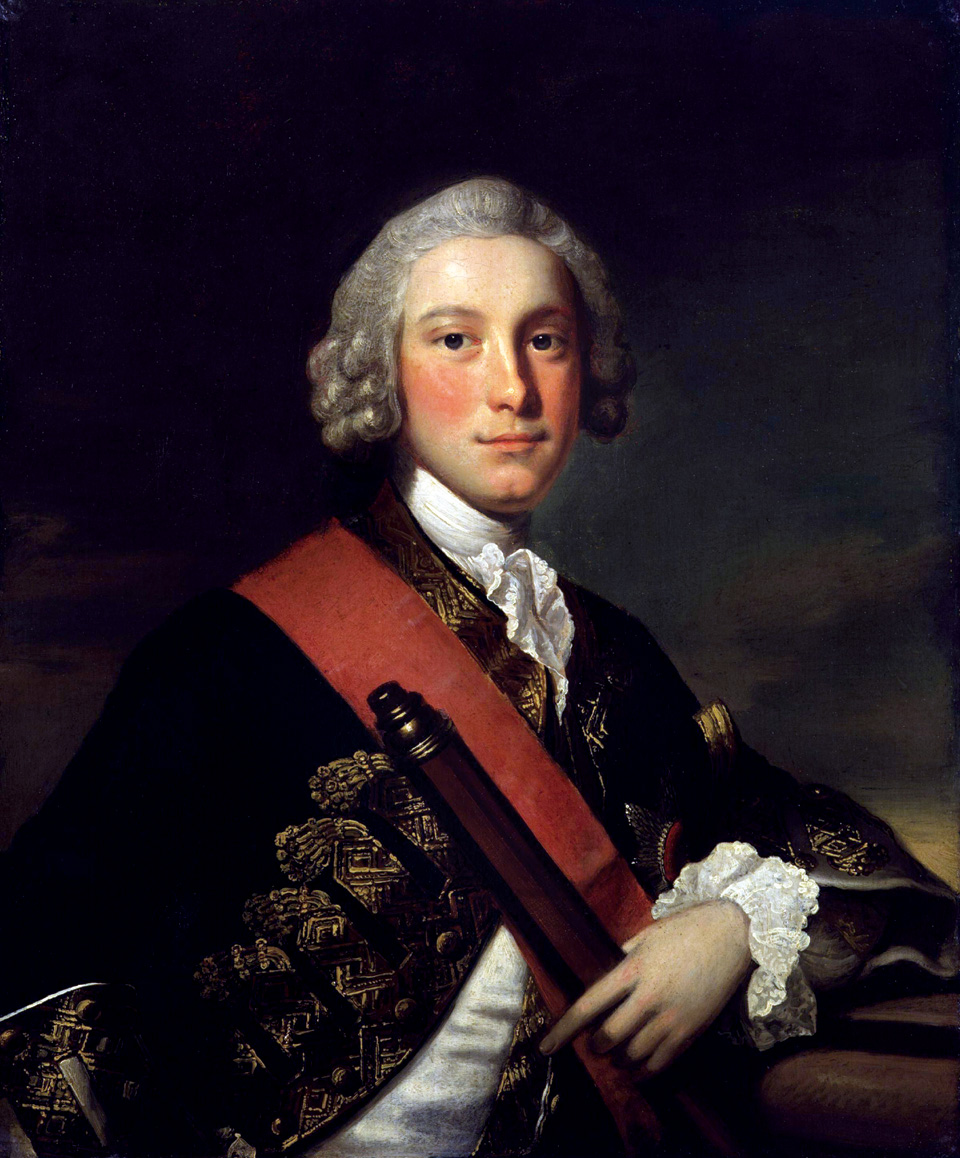
War with Spain “gives me great concern,” Richard Huck, a British army physician serving in Martinique wrote upon hearing of Spain’s entry into the war. “I am afraid we shall broil long in the Torrid Zone.” The sickness and disease that swept through the British expeditionary forces in Martinique did not bode well for operations in Cuba.
Another body of troops slated for the expedition was to come from North America. It was to number 4,000 troops and be made up of regulars and provincials from Connecticut, New Jersey, New York, and Rhode Island. Lt. Gen. Jeffery Amherst, the commander-in-chief of British forces in North America, did not receive specific instructions until April1 regarding how many troops were to be raised from the four American colonies.
Amherst wrote to New York Governor Cadwallader Colden informing him that provincial troops were needed for an expedition of great importance to the British crown. “I am confident it will be very agreeable to them, since they will meet with every indulgence and will not be subject to the fatigue that they have gone through in the long marches in former campaigns,” he wrote. Amherst promised the New Yorkers’ service would be of short duration and that they would be able to return to their homes immediately upon the conclusion of the expedition. He sent similar letters to the governors of Connecticut, New Jersey, and Rhode Island.
Colden wrote back to Amherst on behalf of the New York Assembly, whose members were apprehensive that the provincial troops were to be sent to the West Indies. They requested that the troops only serve on the continent of North America. What is more, they had a deep-seated fear that they would be compelled to enlist with the regulars.
“Their destination must remain a secret for the present,” replied Amherst. He assured them that as soon as the provincials’ service was no longer needed, they would be returned to New York. He also reassured Colden the provincials would not be compelled to enlist in the regular service. New York ultimately sent 600 men, which combined with the other three colonies’ contribution totalled 2,000 provincials, all of whom would participate in the Havana expedition.
Pocock set sail from Portsmouth, England, on March 5 with five ships of the line and a frigate protecting a large fleet of transport vessels. Packed aboard the transports were troops, ordnance, and supplies. The fleet reached Barbados on April 20. From there he set sail for Martinique, which he reached six days later.
Upon arriving at Martinique, Pocock’s expedition assimilated the ships supporting Monckton’s army, as well as Monckton’s 8,000 troops. Even more ships joined Pocock’s fleet when it reached Cape St. Nicholas on the west side of Hispaniola. This gave him a total of 20 ships of the line, eight frigates, and 200 troop transports. Pocock was to rendezvous with the North American convoy at the cape, but on May 26 he received word that they were delayed. The next morning he set off without them for Cuba.
With the help of local pilots from New Providence, captured Spanish charts, and a recent nautical survey, Pocock decided to sail to Havana by taking the dangerous route known as the Old Bahama Passage along Cuba’s northern coast. Most ships sailing to Havana skirted along the southern coast of the island before rounding the western end to enter the harbor at Havana. By using the northern passage Pocock would be able to enter Havana by surprise.
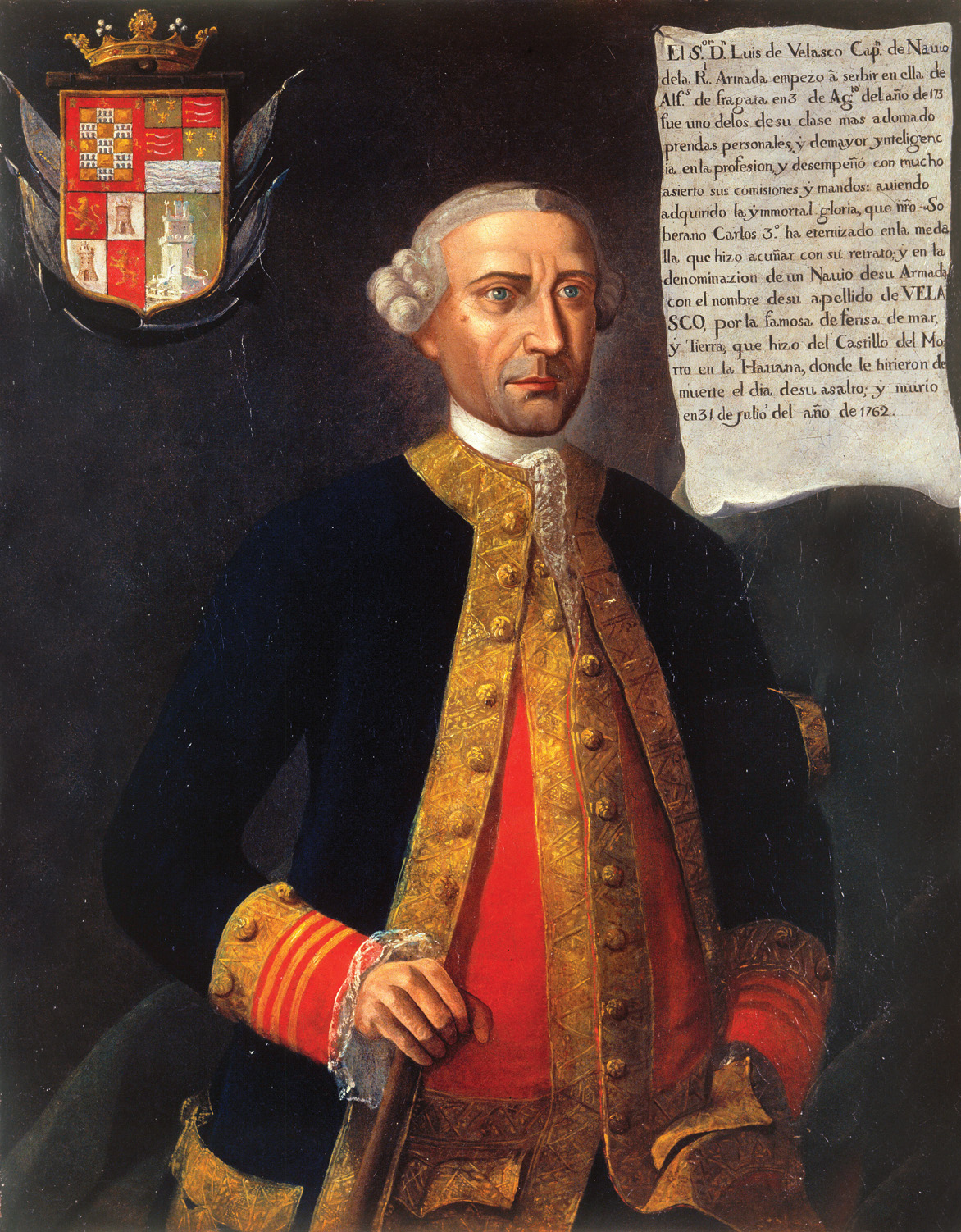
Although the pilots proved of limited use, the British fleet divided into seven formations passed through the strait. The British fleet captured four Spanish naval vessels on June 2, while two schooners managed to escape toward the Atlantic. Pocock learned from the captured crews the strength of the garrison and that a Spanish squadron was in the harbor. The British fleet pressed on toward its objective, which by that time was just 15 miles away.
Due to its importance, Havana was well fortified with a three-mile-long circuit wall. King Philip II of Spain had ordered the construction of two forts, one on each side of the narrow strait leading into Havana’s harbor, in 1589. The smaller of the two forts, star-shaped La Punta, was situated on the southwest side of the strait adjacent to the port. El Morro Castle, the larger and more formidable of the two forts, was situated on the opposite side of the strait channel. The narrow entrance to the harbor was protected by Spanish ships at anchor inside the harbor, as well as the battery at the foot of El Morro.
Several small forts were situated at the mouths of nearby rivers along the coastline. One was located at the mouth of the Cojimar River four miles east of El Morro and two more were situated near the mouth of the Chorrera River.
Field Marshal Don Juan de Prado, the captain-general of Spanish forces in Havana, had arrived to assume command in January 1761. He was the top commander of both naval and land forces. Admiral Gutierre de Hevia command the 14 ships of the line and four frigates in Havana harbor, while Lt. Gen. Jose Antonio Manso de Velasco commanded the army forces at Havana.
Velasco commanded 1,800 regular infantry, 800 dragoons, and 300 artillerymen stationed in Havana and its forts. He also had 6,300 militia men, but less than half of these white, free black, and mulatto troops had muskets. The naval personnel under his command consisted of 5,500 sailors and 750 marines.
A report of the approaching British fleet reached Prado from the commander of the fort near the Cojimar River on the morning of June 6. Prado traveled across the strait in a small boat to El Morro to get a first-hand look at the approaching ships with his spyglass. He incorrectly surmised that the vessels arriving belonged to a trade convoy.
A pilot left behind by Prado to watch the fleet spotted ships turning toward the beach at Cojimar. He quickly reported this to Prado. Church bells in Havana sounded the alarm. Inhabitants rushed out of their homes as panic overtook the civilians. “All the city was a great confusion,” wrote Spanish Captain Juan de Casta. Later in the day a good part of the fleet sailed past the harbor toward Chorrera. At that time, Prado realized that the British had come to lay siege to Havana and a council of war was quickly held.
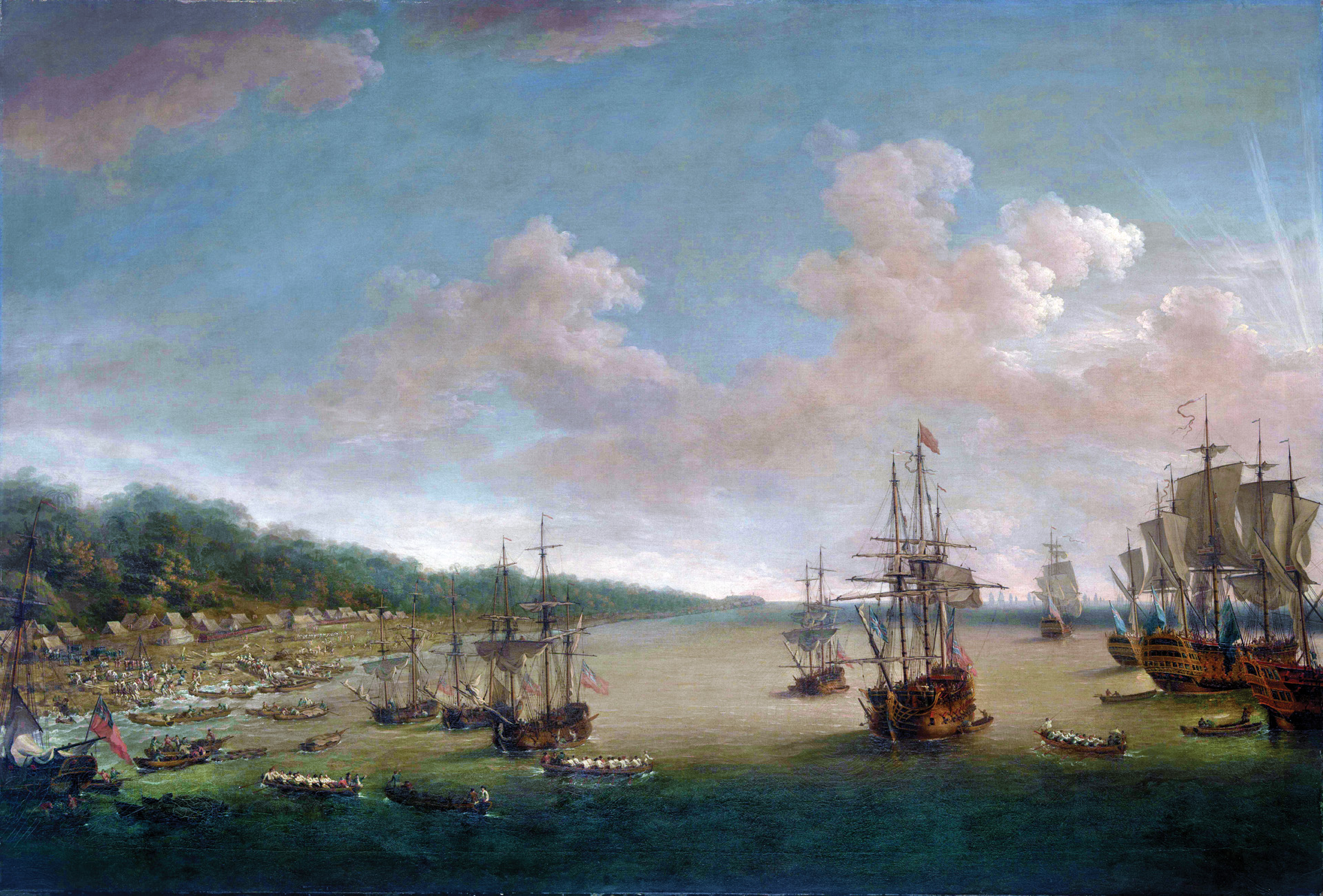
Prado ordered troops to Chorrera to oppose an anticipated British landing at that location. Meanwhile, a large force of Spanish regulars, dragoons, and militia were on the march for Guanabacoa, a large village located at an important crossroads southeast of the harbor. Admiral Hevia ordered the captains of three ships of the line to sink their vessels to block access to the harbor’s entrance. The ships were sunk over the course of three consecutive days beginning on June 8. In addition, Spanish engineers constructed a boom, which they installed on June 9.
General Velasco dispatched sailors and marines to defend key parts of Havana’s defences. Don Luis de Velasco, the captain of the 70-gun Reina, assumed command of El Morro with its 700-man garrison and 64 guns. Another naval captain, with the surname of Briceno, took command of the forces at La Punta at the entrance of the harbor. At the same time, Admiral Hevia put sailors, blacks, and Jesuit college students to work hauling seven heavy guns from the Spanish warships to the top of the key La Cabana Heights, a ridge that commanded the harbor and the city on the east side. Prado had boasted that the British would find Havana impregnable, and he hoped that if they were defeated it would deter them from attacking other Spanish bases.
Pocock sailed west toward Chorrera with part of the fleet in order to create a diversion, other ships moved into position to the east to land Albemarle’s assault force on a three-mile stretch of the coast between the Cojimar and Bacuranao rivers.
Following the successful landing on June 7, Albemarle’s troops set off inland the following day. Colonel Guy Carleton led the light infantry towards Guanabacoa along the west bank of the Cojimar River, Colonel William Howe led two grenadier battalions to reconnoiter La Cabana, and Albermarle followed with the main body marching parallel to Carleton further inland. The capture of Guanabacoa was of great importance because the town and the fertile land surrounding it could supply the army with water, cattle, and vegetables.
Carleton’s column, which had two guns with it, encountered a few companies of Spanish regulars, a large body of militia, and 300 dragoons in the early afternoon. The dragoons advanced at a slow trot towards Carleton’s troops. British infantry fired a heavy volley at the horsemen. The dragoons fled back to the protection of the main line.
The British succeeded, albeit with some difficulty, in getting their guns across a narrow river and into action against the Spanish troops. The Spanish returned fire, but shortly afterwards withdrew, conceding control of Guanabacoa to the British. Albemarle arrived at Guanabacoa with the main force and conferred with Carleton. Albermarle ordered seven battalions to hold the town. They were further instructed to gather whatever provisions they could find and roundup the cattle. As for Carleton, Albermarle ordered him to take his light infantry and secure La Cabana heights in preparation for construction of artillery batteries on the high ground.
Previously, Howe’s grenadiers had probed La Cabana on the night of June 8. Their arrival had prompted the Spanish to destroy their guns to prevent them from falling into enemy hands. The Spanish officer in charge ordered the sailors to spike their guns or push them into the harbor. He left behind a detachment of expendable Spanish militia to delay the British as long as possible.
To the west of Havana at Chorrera, Royal Navy warships traded fire with Spanish shore batteries on the night of June 10. The British found at first light the next day that the Spanish had abandoned Chorrera. After a rugged journey through thick woods that afternoon, Carleton’s light troops easily drove off the militia.
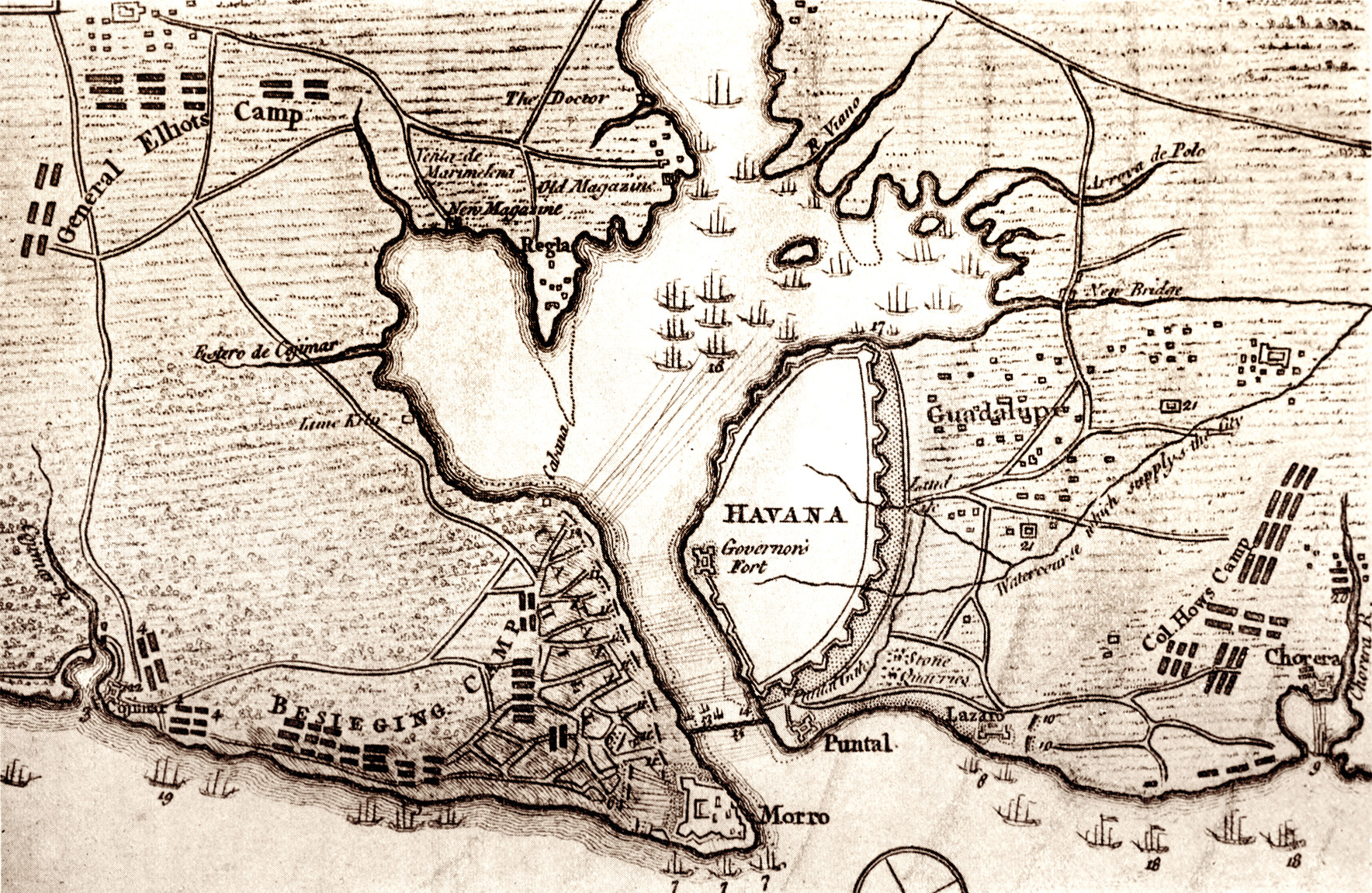
Carleton’s troops named their position atop the heights the Spanish Redoubt. Spanish artillery fire from El Morro and Havana soon crashed into the British position on the heights. Undaunted by the artillery fire, the British infantry on June 12 began constructing a battery for howitzers near the Spanish Redoubt. The guns atop the commanding heights would be able to fire on the Spanish ships in the harbor and also into Havana.
Across the strait, The British began constructing a grand battery 200 hundred yards from El Morro on June 13. In the weeks that followed, the British constructed a half dozen other batteries, one of which included mortars.
Toiling under fire from Spanish guns at El Morro and from Spanish warships in the harbor, the British troops constructing the batteries suffered casualties not only from shell fire but also from heat exhaustion. Rainfall initially hampered the construction of the batteries, but a drought followed that forced the British to ration drinking water. Since excavating earth proved nearly impossible in the rocky soil, the British relied on sandbags, fascines, and gabions to furnish cover for troops manning batteries and constructing saps at El Morro in preparation for an assault.
Work crews had to hack roads through the jungle in order to haul cannon from the warships to the hilltop batteries. The rocky soil precluded digging trenches in the earth. The British troops filled thousands of sandbags on the beaches, which were then carried inland by soldiers, sailors, and laborers. Men died from the fatigue and heat, while others were captured or killed by enemy irregulars preying on British foragers.
Howe landed 2,800 troops on June 15 at Chorrera on the west side of Havana. He hoped not only to find new sources of water in that location, but also divert the streams flowing into the city that sustained the Spanish. Unfortunately, the British did not find sufficient water, and therefore had to tap into the water stored on their warships to sustain the troops deployed east of the city.
General Velasco orchestrated several sorties to keep the British off balance. In the early morning hours of June 29, 1,000 Spanish troops attacked the British batteries deployed against El Morro. The British fought fiercely, and succeeded in repulsing the Spanish. The following day, the British completed the construction of their artillery positions.
At dawn on July 1 the British batteries began shelling El Morro. Albemarle hoped to open a breach in the sturdy walls of El Morro. Captain Augustus Hervey had orders to lead four ships-of-the-line into position to lend their weight to the bombardment of El Morro. The Stirling-Castle was delayed, but at mid-morning the Cambridge, Dragon, and Marlborough opened fire on El Morro.
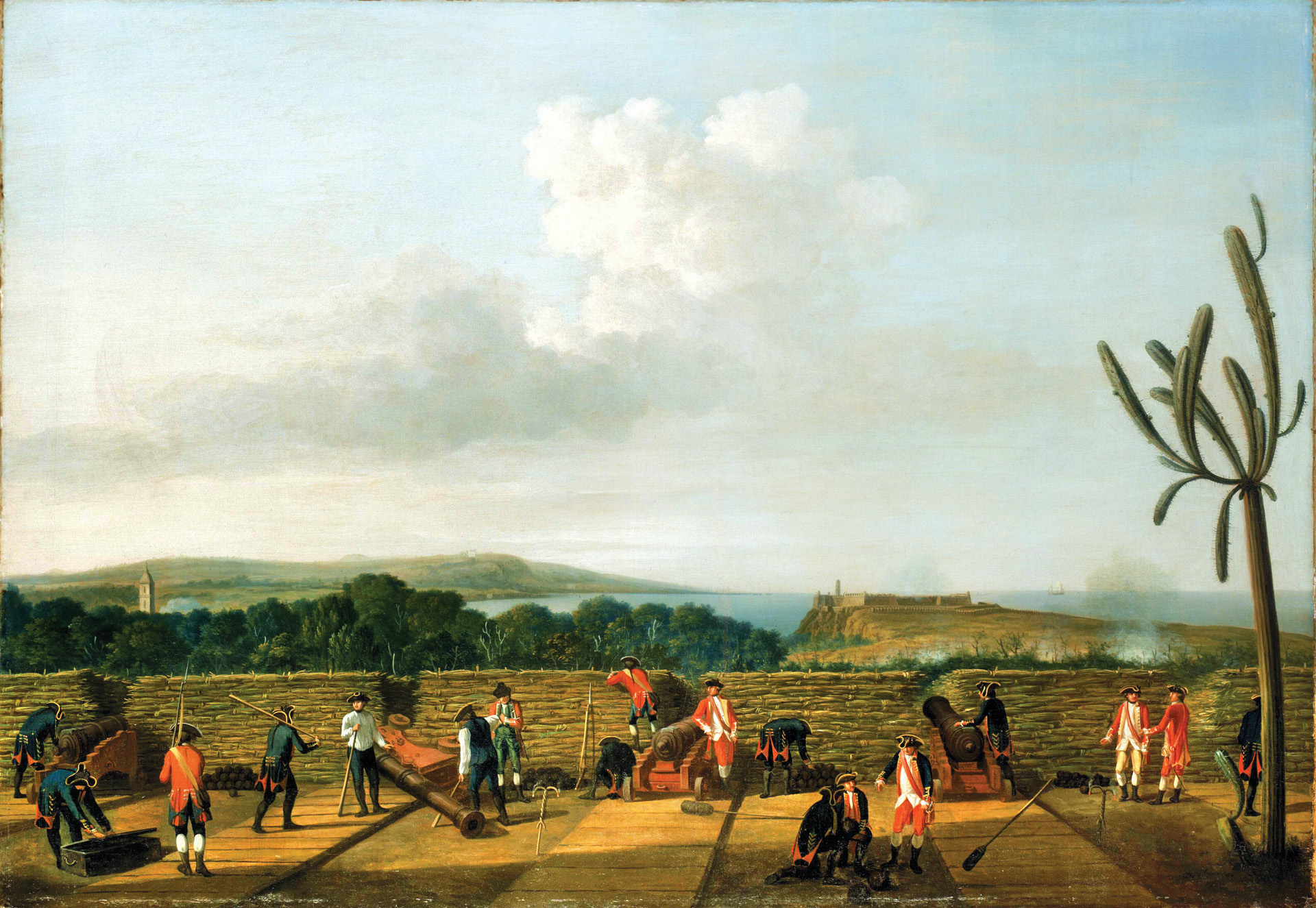
Spanish gunners responded with a heavy fire from the fort’s batteries directed at the warships. Unfortunately, the Spanish sailors manning some of the batteries at El Morro were unable to depress their guns far enough to strike the hulls of the ships; for that reason, they directed their cannon fire to the rigging, spars, and masts. The fire proved effective and wrought substantial damage, bringing some masts crashing down on to the decks of the ships.
As the tide went out the Dragon, which was close to El Morro, ran aground. With no help coming from the other ships, the crew of the Dragon off loaded stores and managed to get her free after considerable difficulty. The Dragon then withdrew with the other two battered ships. The three ships suffered a combined total of 200 casualties.
With the three British ships driven off, the Spanish gunners returned fire on the British batteries. Five hundred Spanish sailors crossed the harbor that night to bringing with them ammunition and replacement gun carriages for the defenders of El Morro. “[We found taking El Morro] to be tougher work, and the Spaniards more resolute than was at first imagined,” wrote Mackellar.
The British batteries continued their bombardment the next day. An ember from the guns at the Grand Battery ignited the dry fascines at midday on June 2. The gunners and soldiers managed to put the fire out, but in the early morning hours of the following day it flared up anew. Flames lit up the darkness as it overtook the Grand Battery destroying most of it. The loss of the Grand Battery was “a mortifying stroke,” lamented Mackellar.
Albemarle ordered the battery repaired, which was made almost impossible by enemy artillery fire. Another fire in the battery on July 11 rendered it unusable. Meanwhile, more batteries were under construction, while sailors unloaded heavy 32-pounder guns from the warships. Manned by naval gunners, the 32-pounders wrought havoc on El Morro. The Spanish had been replacing their damaged guns at night, as well as regularly rotating fresh troops from Havana to crew the guns.
But with heavier naval guns pounding El Morro’s walls, the British succeeded in knocking out many of the Spanish guns. But the British had problems as well for their artillery crews were running low on ammunition. The British sailors needed to have their powder and shot replenished if they were to continue to bombard El Morro. For that reason, Commodore Keppel ordered ammunition brought in from British-held Jamaica.
With their guns dominating El Morro, the British began constructing a path of attack towards the fort. Since the ground was too hard
to dig trenches, the troops and laborers crafted gabions. The gabions they constructed were wicker cages filled with earth and rock. The work on the path of attack progressed well over the course of a week. By July 19 the saps to conceal the British approach had been advanced close to El Morro’s seaward bastion and the lip of its protective ditch. If the British could secure that position, they could fire their muskets at Spanish troops on the fort’s ramparts.
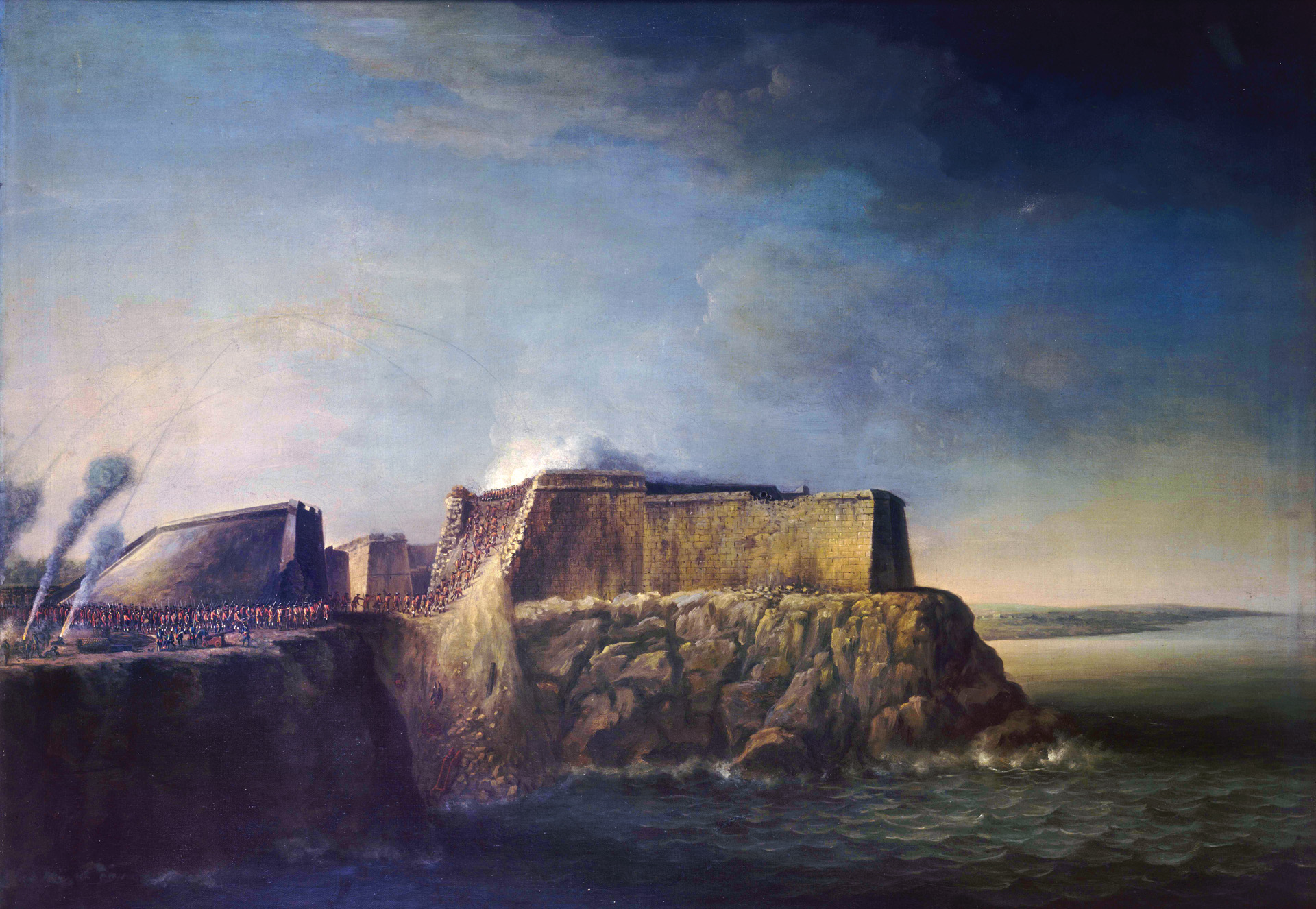
El Morro Castle. The Royal Scots formed the forlorn hope and were followed by regulars carrying assault ladders, marksmen, sappers, and lastly the main assault force.
British intelligence reports regarding El Morro had failed to note the deep ditch in front of the fort. The British initially intended to fill the ditch with 600 bags of cotton, but this proved impractical because they had underestimated the depth of the ditch. Instead, they decided to mine the seaward bastion, place explosives in the mine, and detonate the explosives with the intention of making a breach in both the ditch’s counterscarp and the ditch itself. With the ditch full of debris, the attacking troops could fight they way over the top of the rubble and into the bastion. Some of the sailors aboard the British warships were Cornish miners, and they joined army sappers in attempting to dig the tunnel despite the rocky soil.
Discerning the British plans, the Spanish retaliated. A total of 1,500 Spanish troops counterattacked at 4:00 a.m on July 21. They arrived not only by crossing the strait from Havana, but also from the woods around El Morro.
The Spanish also attacked the British position at La Cabana. British soldiers firing well-aimed volleys of musketry bloodied the Spanish force assaulting La Cabana. A battalion from the Royal American Regiment advanced to reinforce the British troops. The British and Americans succeeded in repulsing that counterattack, as well as others made against the saps and redoubt, inflicting heavy losses on the Spanish. The ground in front of the British position lay blanketed with dead and dying Spanish soldiers. Those who survived the assault on La Cabana either drowned trying to swim back across the harbor or were taken prisoner. The British lost 50 men in the bloody clash. One of the Spanish musketeers shot Carleton in the arm.
As the siege progressed, skirmishing continued to flare up at hot spots around Havana between Spanish militia and British regulars. More dangerous to the British than the Spanish musket balls and machetes was yellow fever. “Fluxes and intermitting fevers is the general disorder, occasioned chiefly by violent heats and great damps in the night,” wrote Lt. Col. Samuel Cleveland, a British artillery commander. Yellow fever, a lack of water, and intense heat had afflicted 5,000 British soldiers and 3,000 British sailors. With disease running rampant, Albemarle became greatly concerned over his prospects of taking Havana. “If the North Americans do not arrive, and very soon, I shall be at a great loss how to proceed,” Albemarle wrote to Earl Charles Wyndham of Egremont, the British Secretary for the Southern Department.
The reinforcements from North America were on their way. The Independent Companies, the British 46th Regiment, and provincials drawn from the four colonies crammed aboard 16 transports and set sail on June 9 from New York under a small escort. They convoy transporting them sighted Cuba 10 days later.
But the convoy ran into trouble as it grew nearer to Cuba. One transport grounded on July 20. Battered by a strong gale, its sailors and soldiers climbed aboard rafts in the storm-tossed waters and made for shore. The following day another ship picked up the men. Five more ships became grounded on July 24. The drenched soldiers and sailors managed to make it to shore safely as the rest of the convoy sailed on leaving them stranded for the time being. Several transports eventually returned and retrieved them on August 2.
The remaining vessels reached Havana on July 28 and disembarked their troops. The provincials were taken to the west side of the city to reinforce Howe’s command, which suffered severely from sickness and constant harassing attacks by the Spanish. The stranded troops, which included half the Connecticut Regiment, were unable to rejoin their command until August 8.
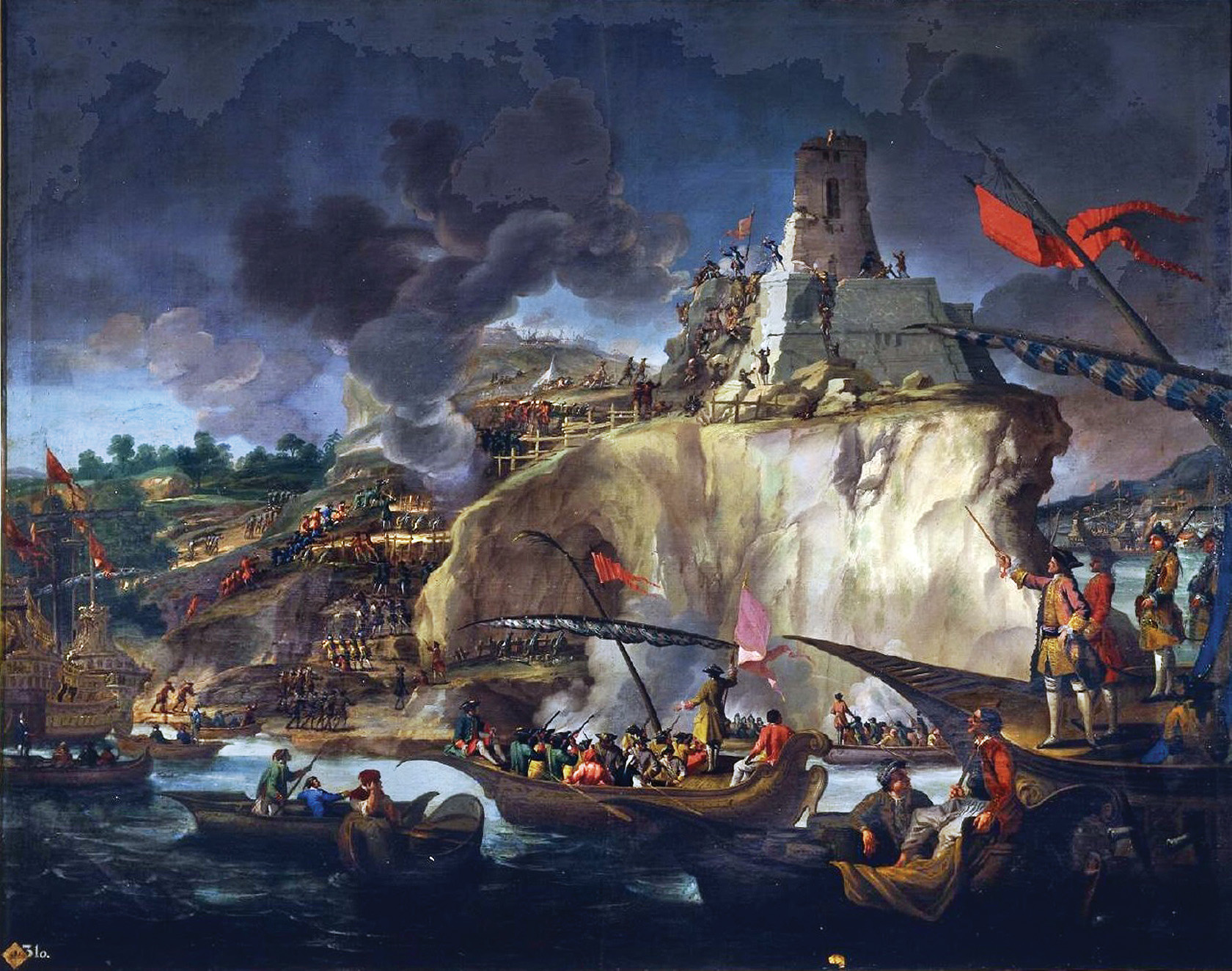
The second contingent of troops from North America set sail on June 30 from New York in a convoy of 14 transport ships, which were escorted by three warships. Not far from the Bahamas the convoy encountered French ships. The British transports scattered to evade capture or sinking. But the French captured five carrying a total of 400 soldiers. The rest of the transports reached Havana on August 5.
During this time, British miners continued to work on their tunnel at El Morro. The work was completed on July 30. The miners detonated explosives at 2:00 p.m. that day. “[There] was a very grand explosion in our favor,” Sergeant Roswell Park of the Connecticut Regiment wrote in his journal. The explosions had sent earth, dust, debris, and smoke skyward. When the smoke and dust cleared, Keppel and Mackellar saw that the explosion had failed to collapse the outer ditch as they had hoped, yet enough of a breach had been made that Keppel ordered his troops to prepare to storm El Morro.
Lieutenant Charles Forbes of the 1st (Royal) Regiment of Foot and a section of 12 men spearheaded the forlorn hope that plunged into the breach. They were followed by Lieutenant Nugent of the 9th Regiment of Foot and Lieutenant Daniel Holroyd of the 90th Regiment of Foot, each of whom led a dozen men bearing ladders that also belonged to the forlorn hope. The main body of the assault force under Lt. Col. James Stuart followed the forlorn hope. It consisted of 300 troops from the 1st (Royal) Regiment and handpicked marksman from the 90th Regiment.
More troops stood by to reinforce the assault on El Morro. These forces included a contingent of 150 men of the 35th Regiment of Foot, as well as 150 sappers who would clear rubble from the breach. Lastly, Keppel’s 1st Brigade stood ready to lend its weight to the attack if needed.
Velasco had 500 regulars, marines, and militia with which to defend El Morro, but they were unable to stop the determined redcoats. “The attack was so vigorous and impetuous that the enemy were instantly driven from the breach,” wrote Albemarle. In the ensuing musket fire Velasco, while attempting to rally his troops, was mortally wounded when he was shot through the lung.
As more redcoats scrambled into El Morro, Velasco’s second-in-command, Captain Marques Gonzales, also was slain in the fighting. Spanish casualties mounted rapidly. After 30 minutes of desperate fighting, most of the troops in the garrison had surrendered. Those who refused to surrender tried to escape by climbing over the walls of the fortress “much as sheep jump over a wall,” recalled Sergeant Park.
A small contingent of Spanish troops took shelter in a lighthouse near the flagpole. They quickly spotted the three lieutenants who led the attack congratulating each other and opened up killing Nugent and Holroyd. An enraged Forbes now led his men against the lighthouse, smashed in the door and killed everyone inside. The British pulled down the Spanish flag and ran up their own colors. After weeks of sweat, toil, and bloodshed El Morro was in British hands. With the guns of El Morro silenced, the siege of the port-city could proceed with greater manpower.
The British lost 42 men killed or wounded in the fighting at El Morro, while the Spanish lost 493 killed, wounded, and captured. More than 200 Spanish tried to escape across the harbor to Havana, but a good number drowned in the attempt. The Spanish received permission to move Velasco to Havana where he died two days later.
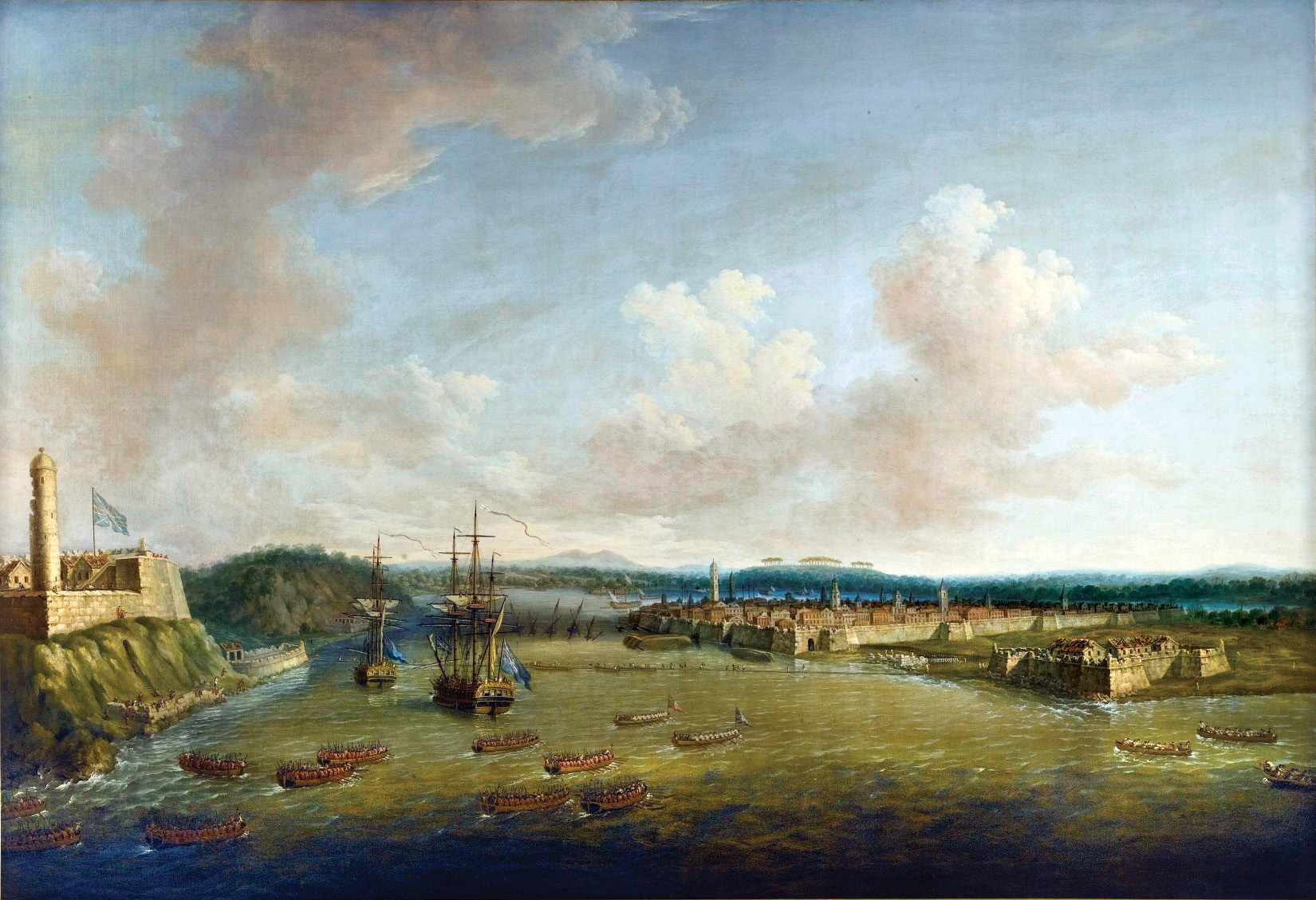
Spanish guns across the strait soon opened up on the ruins of El Morro to prevent the British from using the shattered fortress. The British decided to abandon the ruins and instead began constructing more batteries on La Cabana. Heavy guns were drug and shoved up the heights and planks torn from captured enemy frigates were used to construct gun platforms. By August 10 the batteries were completed which boasted 45 guns and eight mortars.
That same day Albemarle sent a summons to Prado demanding that he surrender the city. “I find myself well assured of carrying on the defense, with strong hopes of a happy [conclusion],” Prado replied in a dispatch. Despite his bold talk, the Spanish defenders faced an increasingly grim situation. While the British guns atop La Cabana swept the town and harbor from the east side, British forces had begun constructing new saps and batteries on the west side of the city. Prado and his senior commanders knew that they faced a shortage of troops and ammunition needed to prolong the siege.
British guns atop La Cabana shelled La Punta and a bastion on the north side of Havana on August 11. After a six-hour bombardment, the Spanish troops at La Punta surrendered. Prado requested a ceasefire at 2:00 p.m. in order to begin surrender negotiations. Albemarle approved the request. The two sides spent the following day in negotiations. Prado agreed to surrender the city, but was unwilling to relinquish the Spanish ships in the harbor. When Albemarle threatened to open fire with his guns, Prado dropped his demands. The Spanish surrendered Havana to the British on August 13.
The capture of Havana proved lucrative for the British especially in prize money which amounted to £737,000. A third of this prize money went to Pocock and Albemarle, while each soldier received £4 and each sailor £3.
The capture of Havana ultimately proved costly to the Spanish. In the Treaty of Paris of 1763, Spain handed over Florida to Great Britain, receiving Louisiana from France in compensation. Given that the treaty forced France to cede all of its territory on the North American mainland to Great Britain, the British were willing to return Havana and Manila to Spain.
The Spanish surrender of Havana could not have come sooner as disease decimated the ranks of the British army. The British lost 520 men killed in action and another 4,700 as a result of sickness. Among the American dead was Sergeant Park, who had succumbed to disease in September.
Many of the soldiers never recovered their health after they left Cuba. Of the returning troops, military chaplain John Graham wrote, “perhaps those were happiest who died and left their bones around Havana, for those who returned home, took with them broken strength, and a languor which lasted to their life’s end.”
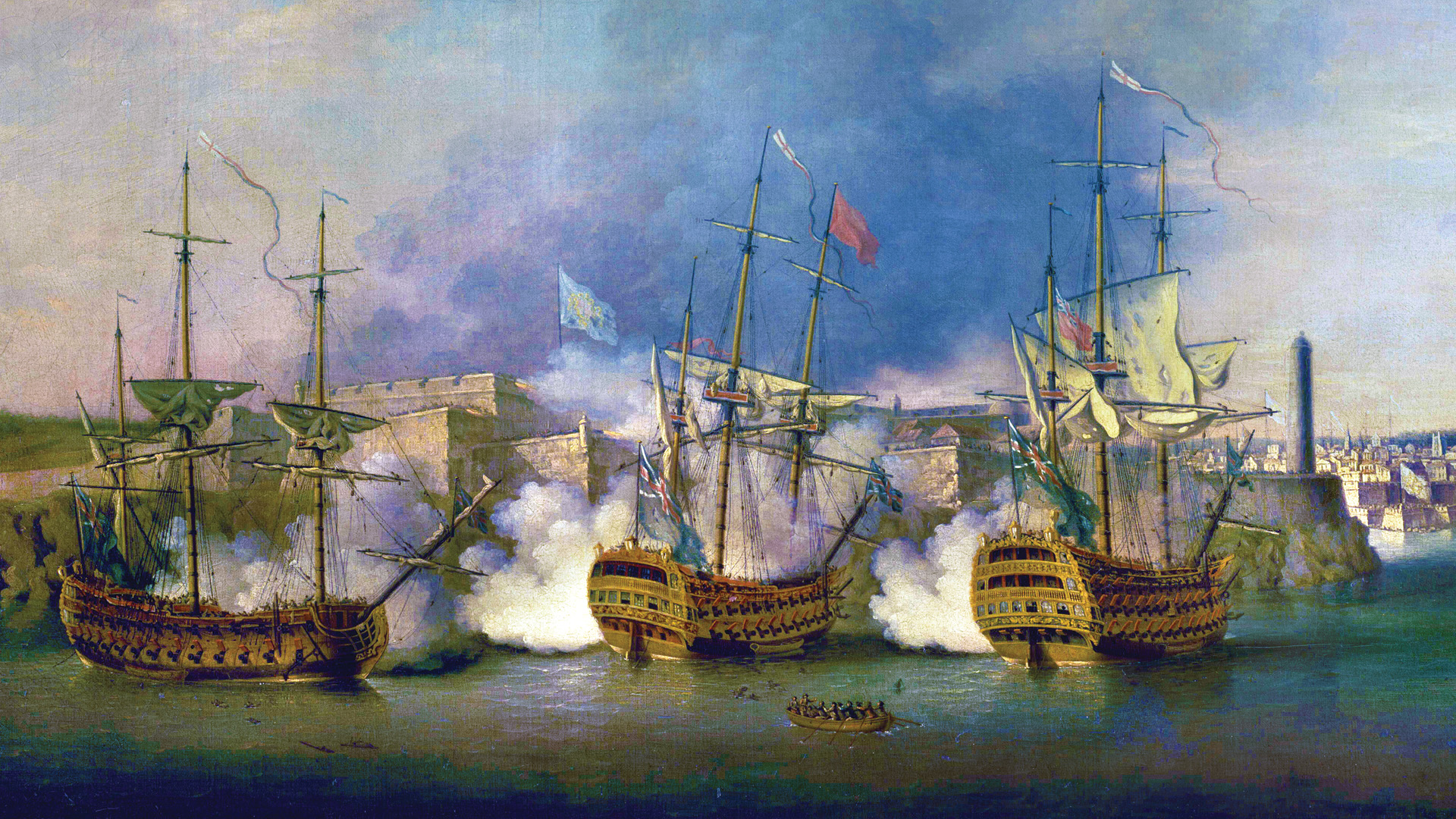
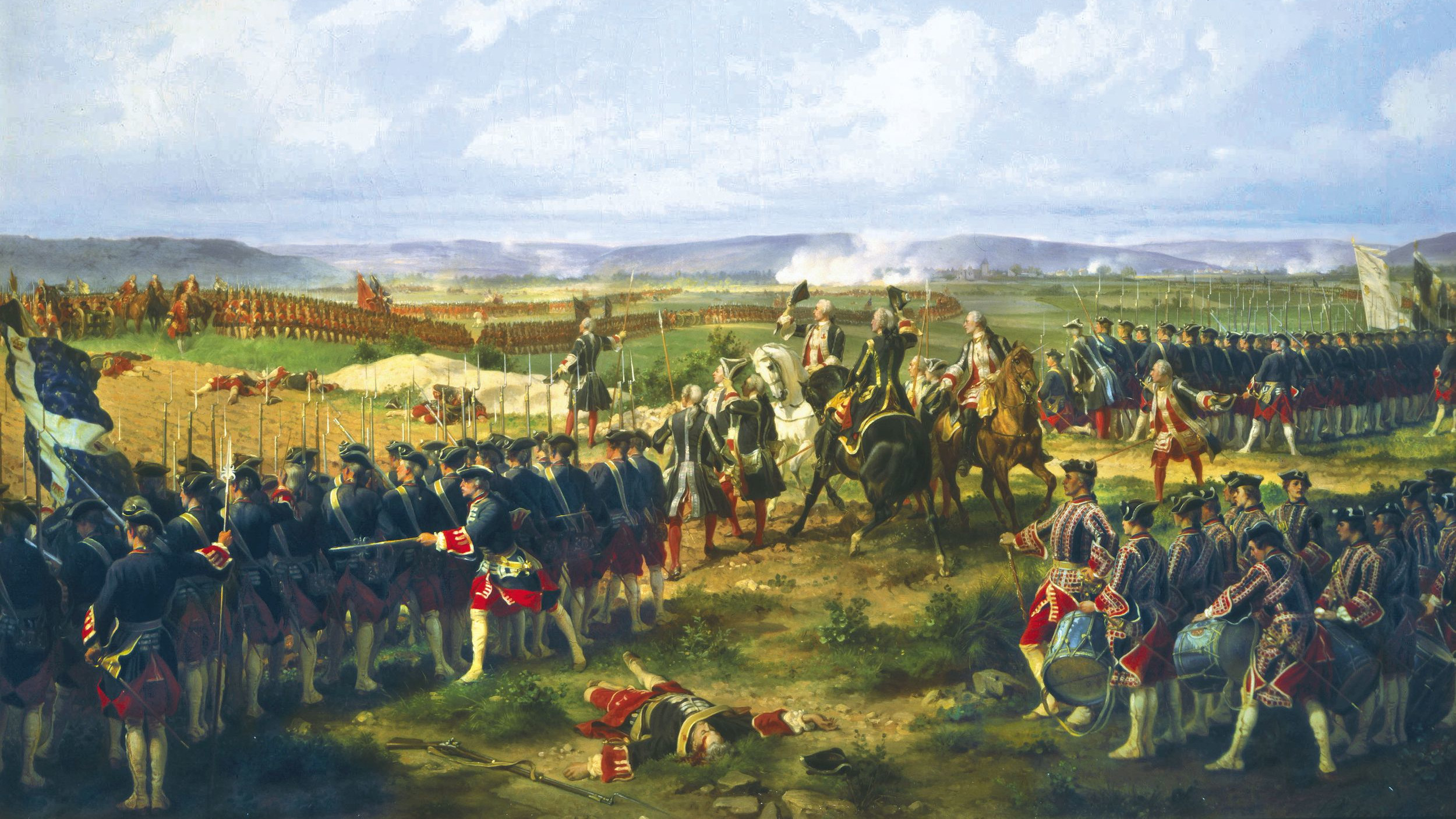
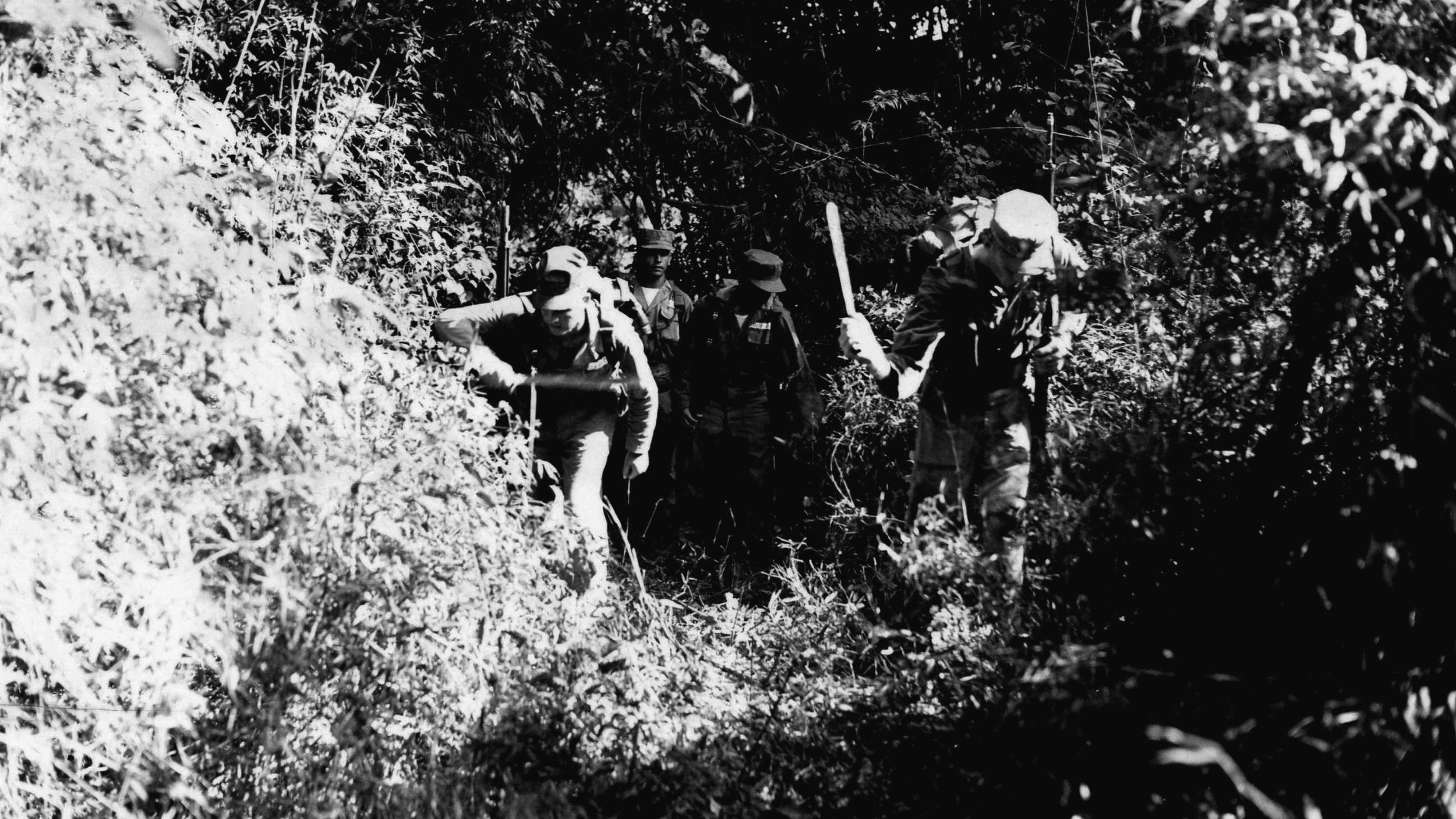
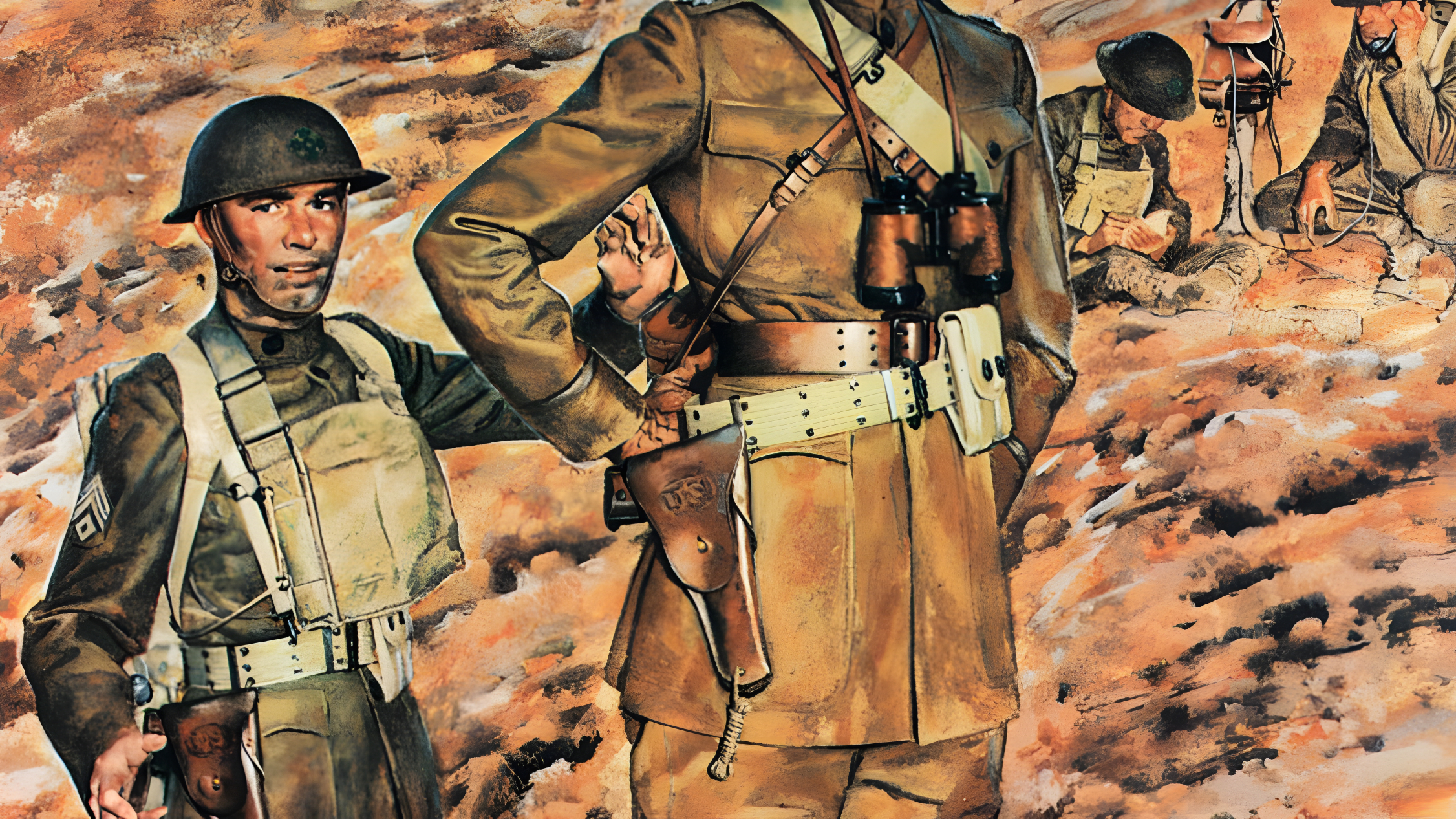
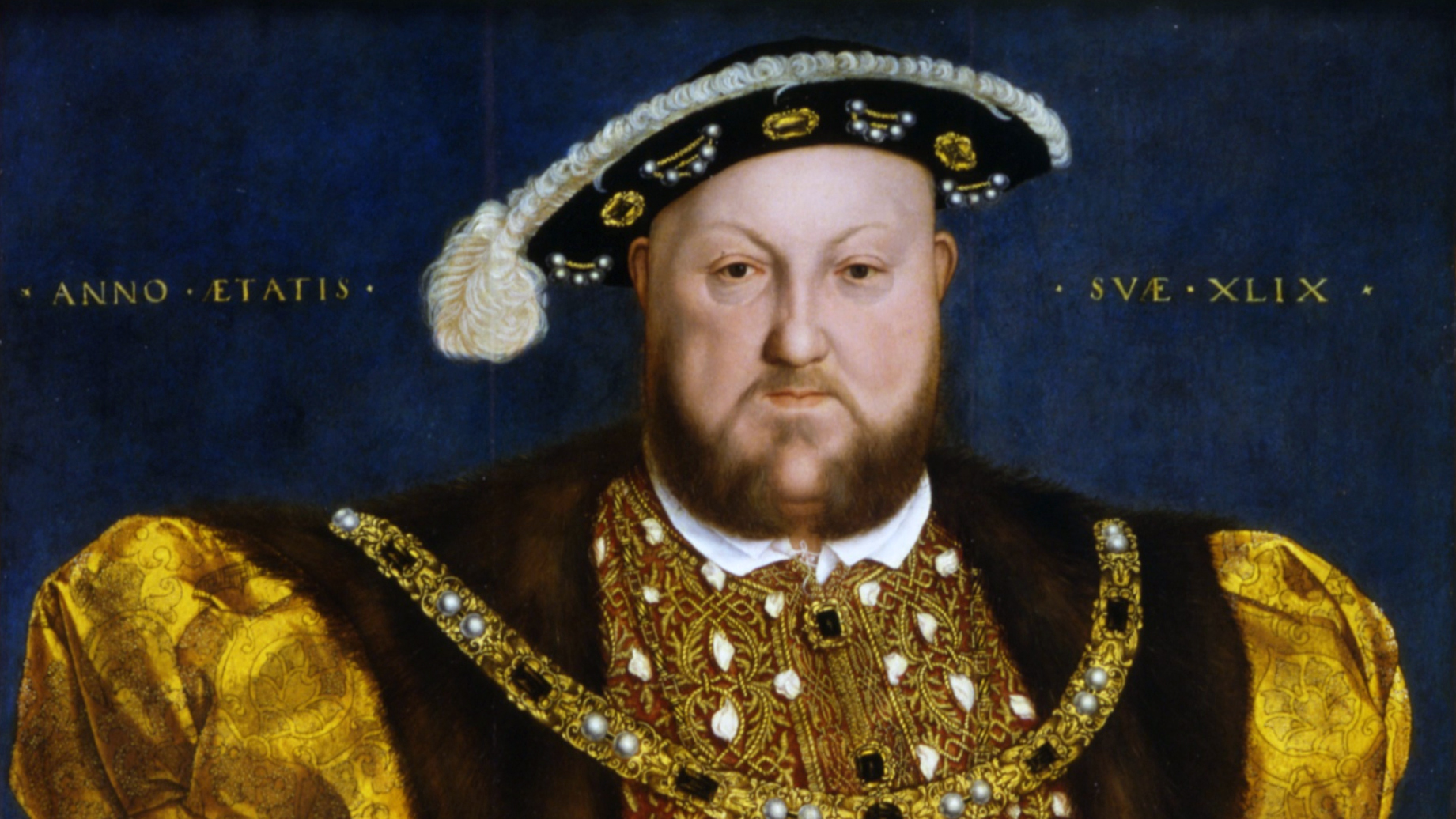
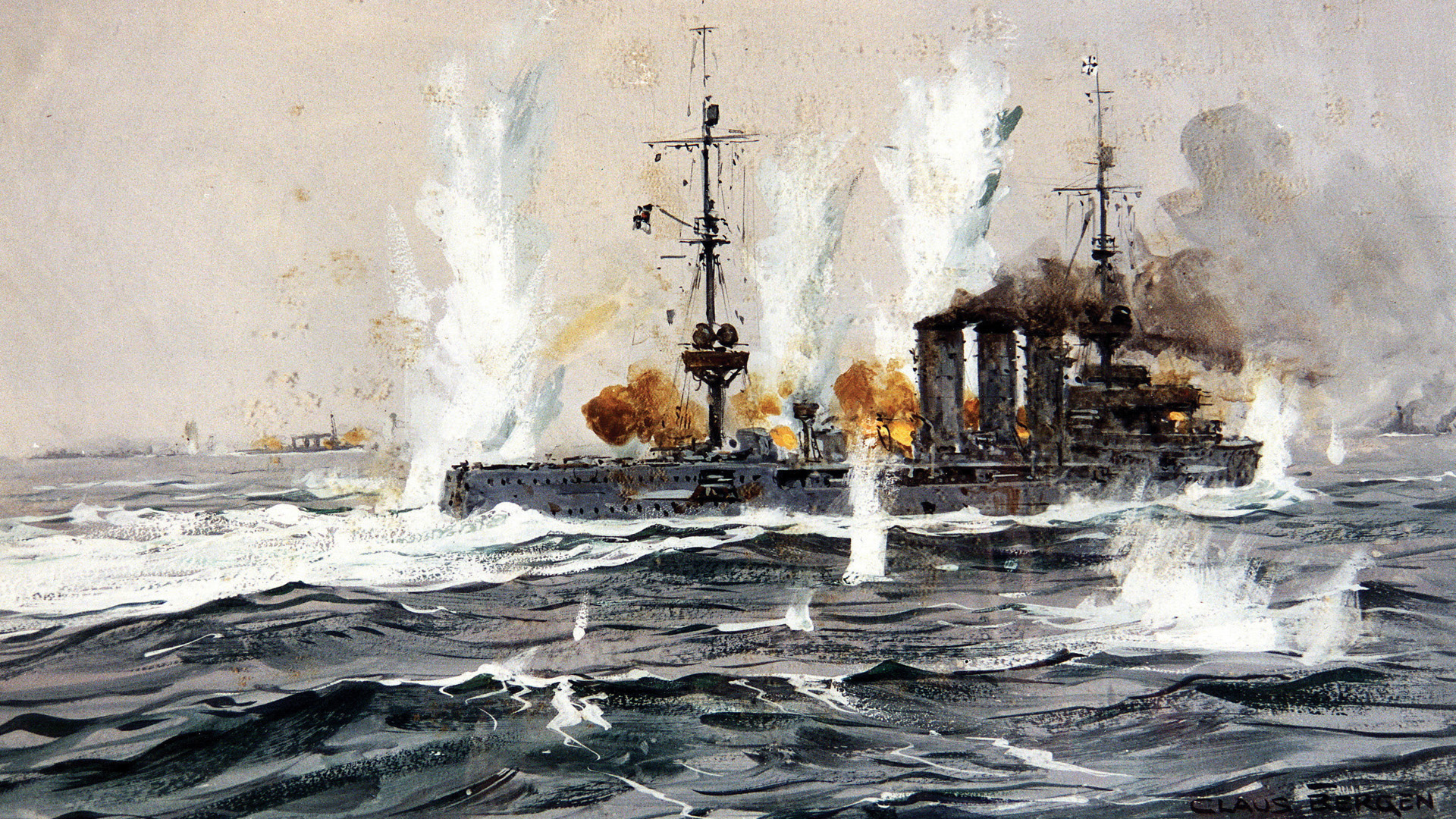
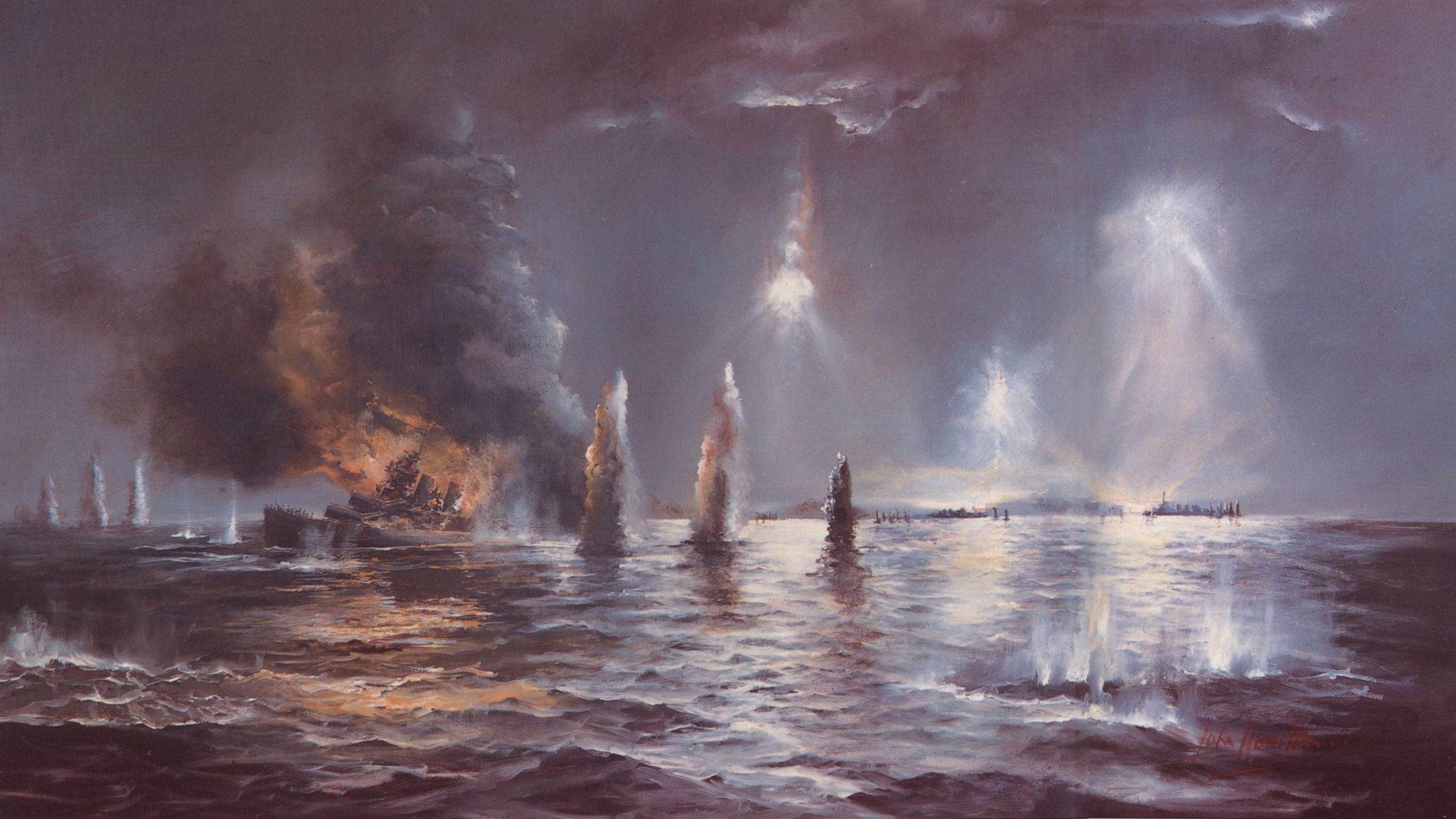
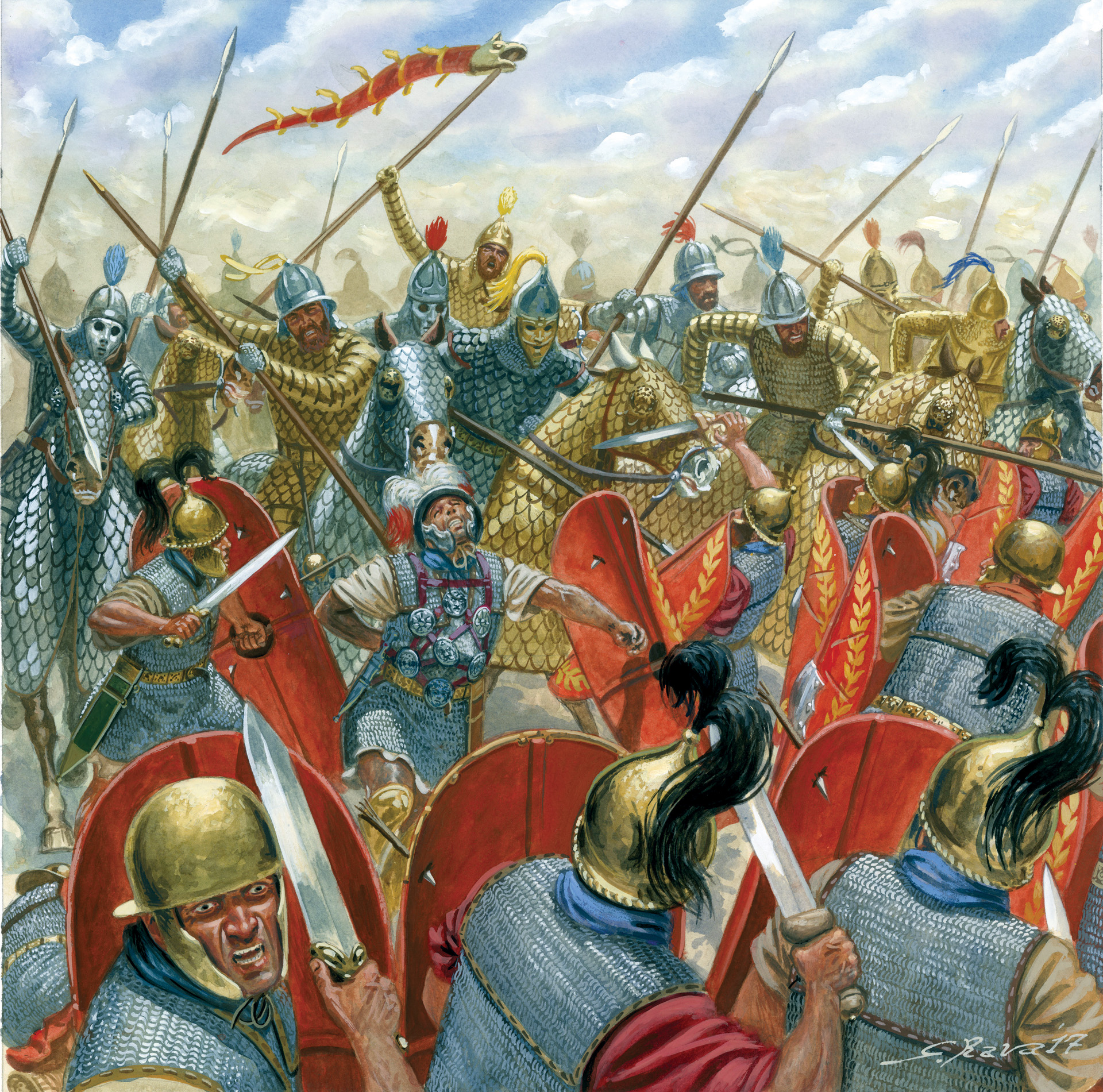
Join The Conversation
Comments
View All Comments